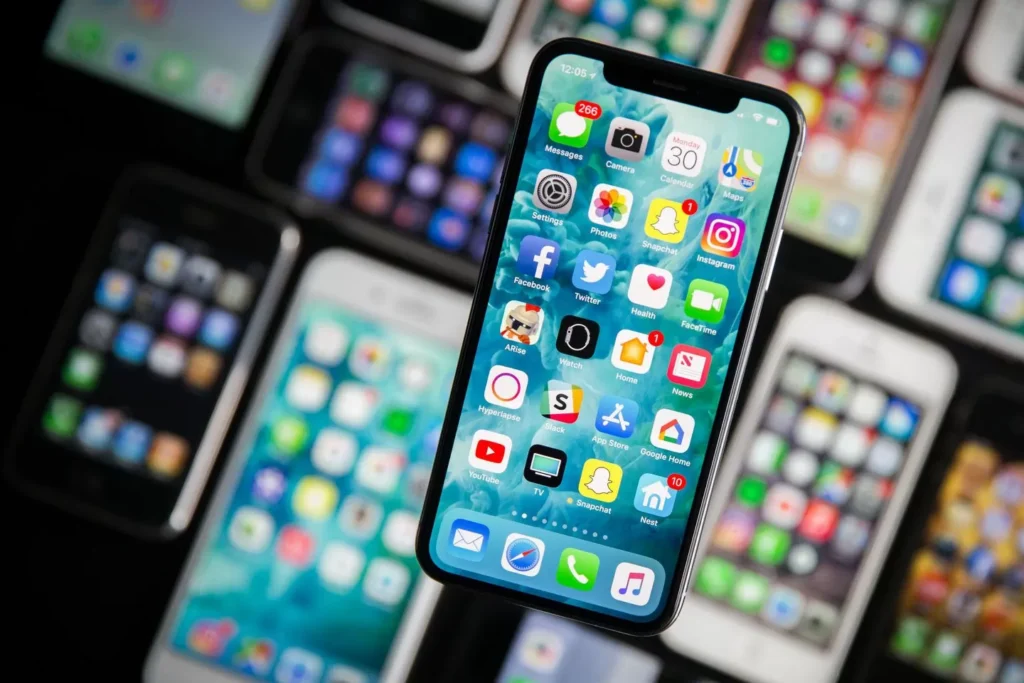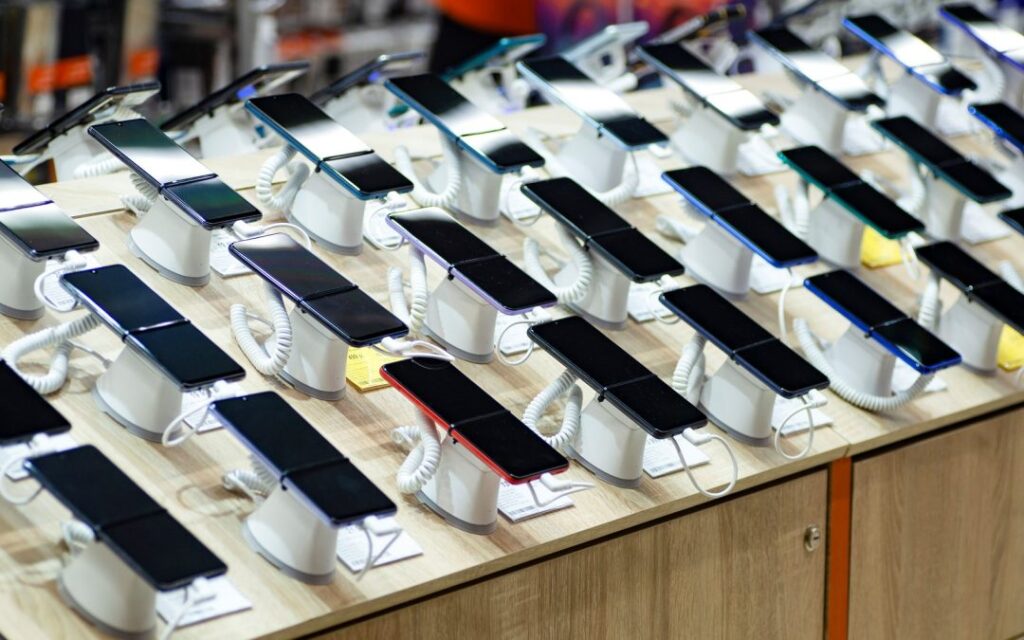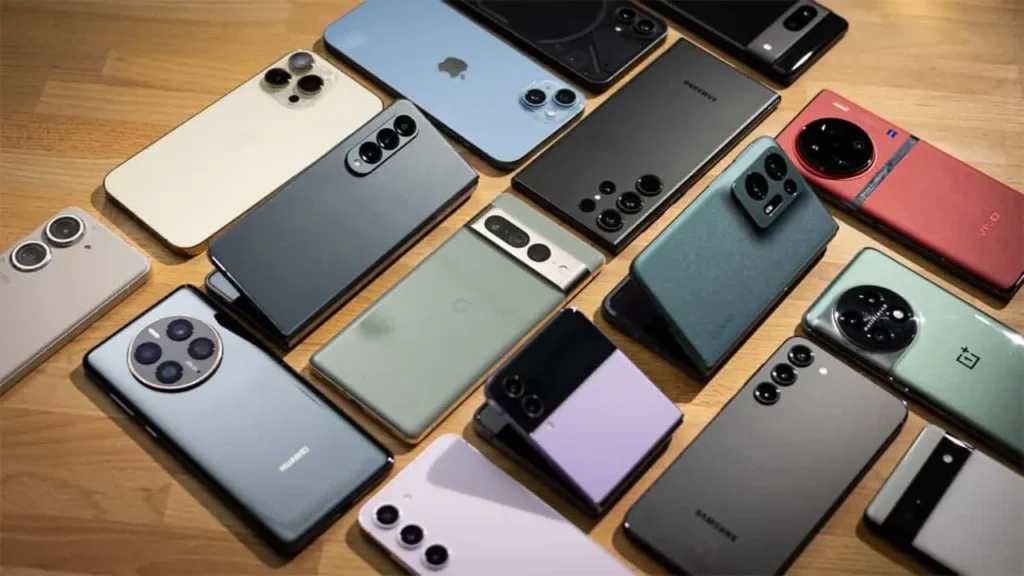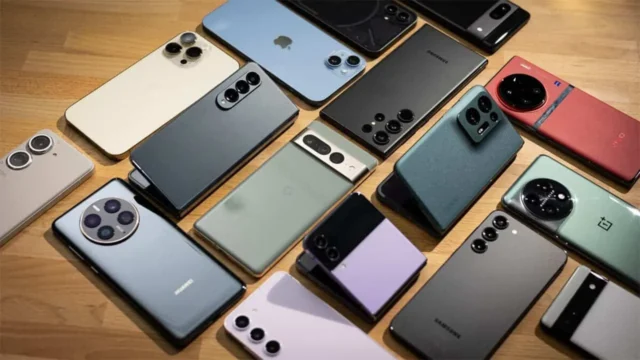Africa’s smartphone industry is no longer playing catch-up. In Q2 2025, the continent’s smartphone shipments climbed by 7 percent year-on-year, reaching 19.2 million units. While global markets either slowed or stagnated, Africa continued its steady rise, marking the ninth consecutive quarter of growth.
What makes this milestone even more impressive is that it came against a backdrop of global challenges—rising component costs, weaker demand in advanced economies, and supply chain uncertainties. Yet, in Africa, a combination of easing inflation, stabilised local currencies, and aggressive vendor strategies helped sustain demand.
According to market research firm Canalys, Africa is now forecast to maintain a 2.1 percent compound annual growth rate (CAGR) between 2025 and 2029, comfortably ahead of the global average. For many, this signals more than just numbers: it is evidence that Africa is becoming a smartphone growth engine for the world.

Table of Contents
Regional Performance: Where Growth Is Strongest
Looking at the continent, the picture is mixed—but overall optimistic.
- Egypt emerged as the star performer with a 21 percent surge in shipments. Local production plants ramped up output to meet Eid holiday demand, showing how manufacturing capacity can boost supply and affordability.
- Nigeria, Africa’s biggest economy, recorded 10 percent growth. As inflation cooled and the naira steadied, consumers regained confidence, leading to more upgrades and purchases.
- South Africa posted modest gains overall (+2 percent), but stood out in one crucial area: 5G adoption jumped 63 percent. Thanks to wider 5G coverage and financing options, many South Africans opted for 5G devices, a trend that could soon spill into other regions.
- Kenya saw a slight decline of 2 percent, yet its resilience in the face of rising costs is worth noting.
- Algeria and Morocco struggled, posting steep declines of 27 percent and 7 percent respectively, mainly due to import restrictions and weaker demand.
- Senegal quietly delivered a steady 3 percent increase, showing the smaller markets are also contributing to the wider story.
These shifts highlight an important truth: Africa’s smartphone growth is not uniform. Local policies, currency stability, consumer behaviour, and vendor strategies are shaping outcomes in each country.
Budget Smartphones Driving Digital Inclusion
If one trend defines Africa’s smartphone boom, it is affordability. In Q2 2025, sales of devices priced under US$100 jumped 38 percent. This affordability revolution is bringing millions of first-time smartphone users online.
For rural families, students, and small business owners, cheap smartphones are not luxuries—they are gateways to mobile banking, online learning, e-commerce, and social connection. The growth of sub-US$100 devices also explains why Africa’s average selling price (ASP) continues to fall, a trend that began in 2023.
Vendor Competition
- Transsion (the parent company of TECNO, Infinix, and itel) retained its dominance with 51 percent market share, though it faces hurdles moving into higher-end segments.
- Samsung grew by 3 percent, expanding from its South African stronghold into Nigeria and Egypt through affordable Galaxy A-series models.
- Xiaomi gained the most ground, surging 32 percent year-on-year to capture 14 percent of the market, thanks to strong retail investments and local partnerships.
- HONOR was the surprise star, with shipments rocketing 161 percent on the back of budget-friendly models like the X7c and strong operator tie-ins in South Africa.
- OPPO saw an 11 percent decline, but is repositioning in Egypt with new retail experience centres to win back customers.
What’s clear is that competition is intensifying. While Transsion still leads comfortably, Xiaomi and HONOR are rising fast, and Samsung continues to use brand strength and operator partnerships to stay relevant.

What the Future Holds for Africa’s Smartphone Market
Looking ahead, analysts predict 3 percent overall growth for 2025, even as global demand remains sluggish. The reasons are clear: Africa’s smartphone journey is still far from maturity. With internet penetration only around 46 percent, millions of Africans are yet to own or use smartphones.
Two big shifts are shaping the road ahead:
- Rural Expansion
The next wave of adoption will come from rural communities, where connectivity is improving and mobile money services are expanding. Vendors and operators are now targeting these areas with cheaper devices, bundled data, and flexible payment plans. - Local Manufacturing
Countries like Egypt and Ethiopia are leading efforts to build local assembly plants. Uganda and Algeria are following suit. By producing devices closer to consumers, costs fall, jobs are created, and regional trade agreements reduce import duties. This “Made in Africa” approach is becoming a cornerstone of sustainable growth.
As consumers demand more powerful yet affordable devices, and as governments push for digital inclusion, Africa’s smartphone industry looks set to remain one of the world’s most exciting frontiers.

Key Takeaways
| Key Area | Insight (Q2 2025) |
|---|---|
| Market Growth | 7% YoY to 19.2M units; nine straight quarters of expansion |
| Top Performers | Egypt (+21%), Nigeria (+10%), South Africa (5G +63%) |
| Decliners | Algeria (-27%), Morocco (-7%), Kenya (-2%) |
| Affordability Trend | Sub-US$100 phones +38%; ASP continues to fall |
| Vendor Highlights | Transsion 51% share; Xiaomi +32%; HONOR +161%; Samsung steady; OPPO -11% |
| Future Outlook | 3% growth forecast 2025; focus on rural markets + local production |
Conclusion
Africa’s smartphone market in Q2 2025 tells a story of resilience, affordability, and opportunity. While global markets wrestle with slowdown, Africa continues to expand—led by Egypt’s production push, Nigeria’s stabilisation, and South Africa’s 5G momentum.
Budget smartphones are reshaping access, enabling millions of people to join the digital economy for the first time. Meanwhile, rising brands like Xiaomi and HONOR are forcing even dominant players like Transsion to rethink strategies.
Most importantly, the road ahead looks promising. With rural adoption, local manufacturing, and digital services expanding hand-in-hand, Africa’s smartphone industry is not just catching up—it is becoming a global driver of growth.
Join Our Social Media Channels:
WhatsApp: NaijaEyes
Facebook: NaijaEyes
Twitter: NaijaEyes
Instagram: NaijaEyes
TikTok: NaijaEyes














![Mr Macaroni Drops Blistering Remark: ‘APC Filled with Most Corrupt People’ as He Slams Tinubu’s Controversial Pardon for Criminals=]] Mr Macaroni](https://naijaeyesblog.com/wp-content/uploads/2025/03/Mr-Macaroni-1-1-180x135.avif)

![Chaos Erupts in Abuja Hotel as BBNaija Star Phyna Sparks Fierce Scene Over Alleged N200,000 Dispute [VIDEO] Phyna](https://naijaeyesblog.com/wp-content/uploads/2024/11/A-Picture-of-Phyna-BBNaija-180x135.jpg)























